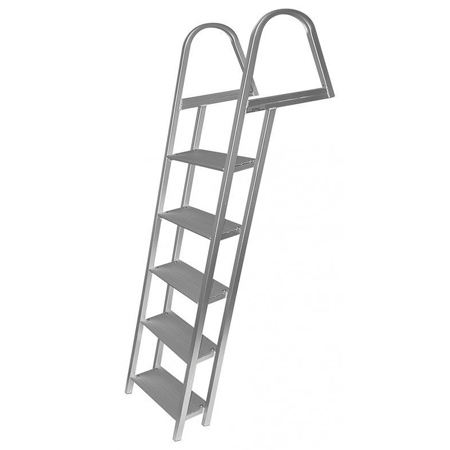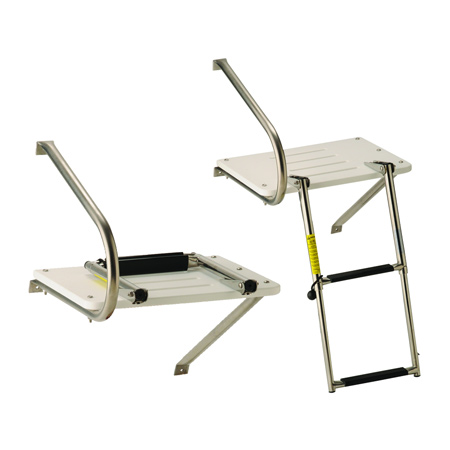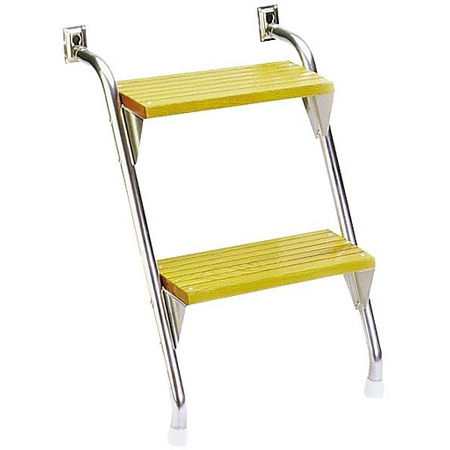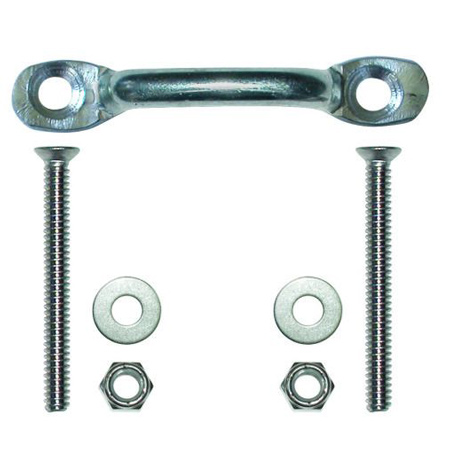Ladders, Steps, and Platforms
Ladders, Steps & Platforms How-Tos
Safety tips for Scuba Divers and Swimmers When Using Ladders
Scuba divers diving from boat and dock ladders need to keep in mind that there are safety issues to be considered during entry and exit from the waters. Accidents happen without notice, and if divers and swimmers put safety as a priority, then the probability of accidents in the water reduce by a significant margin.
Be extremely careful and cautious when you encounter these type of situations
Slipping
For instance, one can easily slip as the water causes the ladder surface to be wet. This increases the possibility of slipping when exiting or entering the water. Whether you are a scuba diver or a swimmer, ensure that you take care of yourself as you ease into the water or as you exit from the water onto the dock or into the watercraft you are using.
Do not assume that you will fall into the water, and this may not be a serious concern. Well, the water will break your fall but the ladder might hit other parts of your body leaving you in pain.
When diving in rough waters where there might be large swells and powerful undercurrents, the ladder can pose a danger to you when using it. When exiting the water, ensure that no large swell is visible as it may carry you and run you against the ladder or jam you together with the ladder. Undercurrents are also dangerous especially when you swim too close to the ladders. If you want to exit the water, ensure that any undercurrent does not push you towards the ladder as you can get injured in the process.
Diving fins are slippery when wet and hard to use when using a ladder. Always ensure that you remove them before attempting to use a ladder. They can cause you to fall back into the water or make the exiting process quite a laborious task. There are ladders that are designed to be used when you have your fins on. Christmas tree ladders are a good example. Ensure that you know which type of ladder you are using so as to be safe.
For other types of watercraft other than sail or powerboats, consider a traction pad. There are companies that make traction mats for PWCs and Jet Skis, as well as SUP traction pads and kayak traction pads. These can help prevent slipping on smaller types of boats.
Rough Waters
Most divers avoid diving when the waters are rough. However, divers who are professional sea photographers and experienced divers may want to go on an adventure when the sea is rough. The biggest problem with a rough sea is that the swells, waves and undercurrents may be too strong even for a professional diver.
It is advisable to put safety first and avoid such waters but if the waters become rough when you are still at sea swimming or diving then try as much as possible to shorten your dive time and climb aboard.
Wait until the waves move past the boat. Any swell in the vicinity should also be left to pass since the force of the water can carry you further from the boat, into dangerous zones such as a boat engine or propellers or knock you against the sides of the watercraft or the boat ladders.
When dealing with strong undercurrents, ensure that you are horizontal to the water. This creates a somewhat streamlined angle which will allow you to cut into the undercurrent. Cutting the undercurrent allows you to maintain your position in the water. As soon as the undercurrent passes, try to swim towards the boat as fast as possible. This is assuming that you are several feet deep into the water. If you are near the boat, always use the rope that is tied to the boat to direct you towards it and to avoid being lost at sea.
If you attempt to swim towards the boat when an undercurrent passes, it will drive you further from the boat, and you may find yourself in a bad situation. Always try and dive in groups or with the company of another diver. In this way, you will be able to help each other in times of crises. The waters are tricky, and you never know what may happen.
Carbon Monoxide Poisoning
Carbon monoxide poisoning is deadly to scuba divers. Ensure that you consult with your tank filling station and check whether they have a carbon dioxide monitor. Air is tricky, and you cannot be sure of what you are breathing. Thus, it's essential to make sure you have a carbon monoxide analyzer that allows you to check your gas tank. This safety precaution will help you breathe with ease knowing that your tank has adequate oxygen and no carbon monoxide.
Carbon monoxide kills as the diver ascends the water depth due to a decrease in pressure in the water. The scuba diver can dive without knowing that the tank poses a danger. Danger will manifest when the diver attempts to exit the waters as the pressure that was converting the harmful carbon monoxide gas to oxygen and carbon is no longer at play thus the gas saturates the body causing unconsciousness and death.
A carbon monoxide analyzer that is portable can easily fit in your diving bag and prevent imminent death.
Getting Caught by the Propeller
The boat propeller releases force into the water that can disorient your movement in the water. Always ensure that your dive allows space between you and the propeller. Do not dive from the back of the boat unless the propeller is switched off in order to increase safety. Take your time before diving to ensure that the boat propeller has been switched off. Also dive away from the propellers so that even when they are on, they won't suck you into the vicinity of the propeller force.
If you get caught in the propeller, without help chances of survival are minimal. Propellers are dangerous. Bigger watercrafts have massive propellers that can kill a diver in seconds if stuck between the fins of the propeller. It is dangerous to swim near or dive near a turning propeller. Avoid this area as much as possible.
Avoid currents generated when a flat bottomed vessel is crossing as these currents emanating from the sides of the vessel will only push you towards the propellers.





